MP Board Solutions for Class 10 Geography Chapter 4 – Agriculture
MP Board Solutions for Class 10 Geography Chapter 4 – Agriculture are essential for understanding agricultural practices and their significance in the MPBSE curriculum. These well-structured answers help students grasp topics like types of farming, cropping patterns, major food and cash crops, and the role of technology in farming. Designed as per the latest syllabus, these solutions strengthen conceptual clarity and improve exam preparation. Ideal for revision and practice, they connect textbook knowledge with real-life scenarios, making them a valuable study tool for scoring well in Class 10 Social Science exams.
MP Board Solutions For Class 10 Geography – Agriculture – Exercise Images
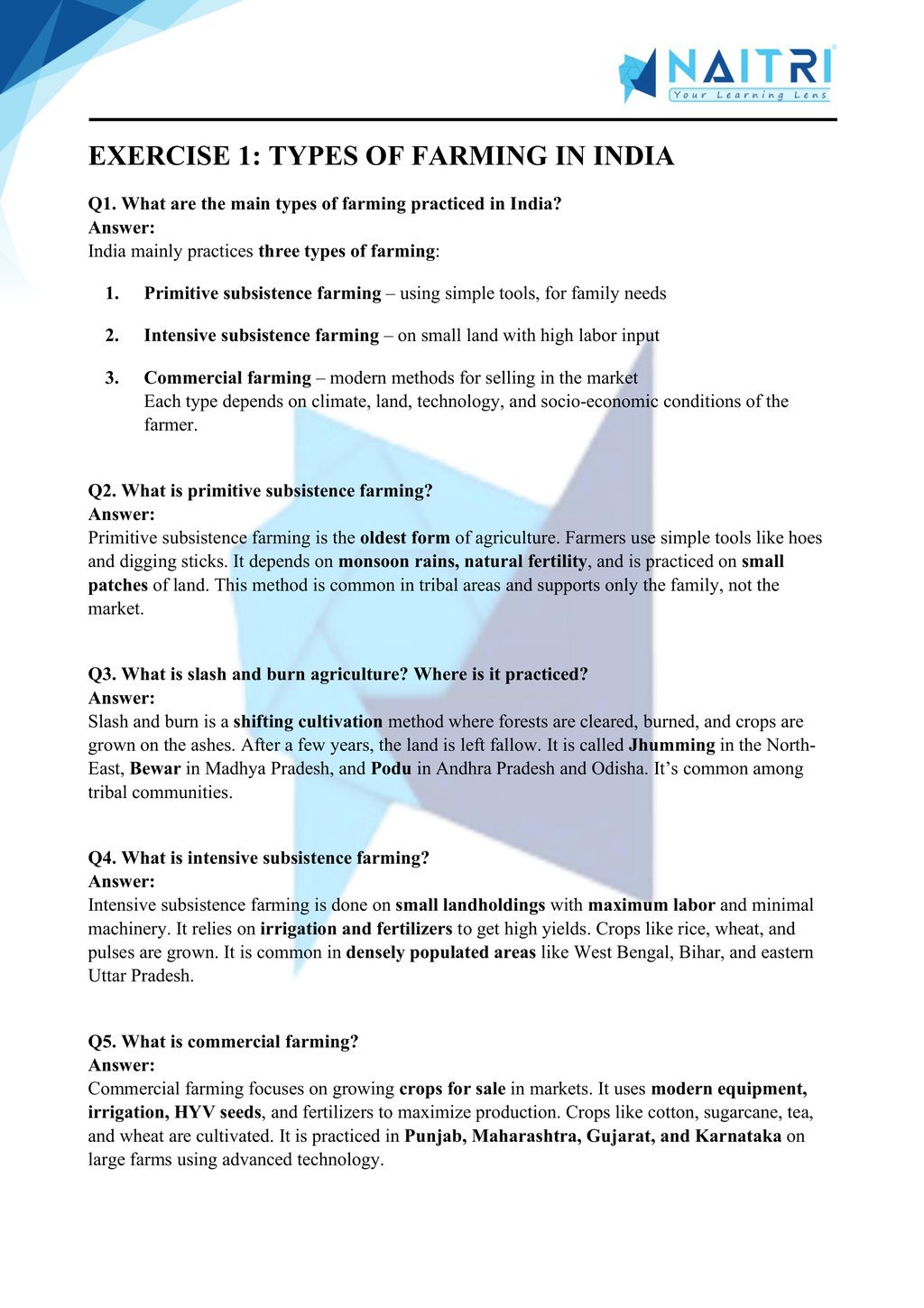
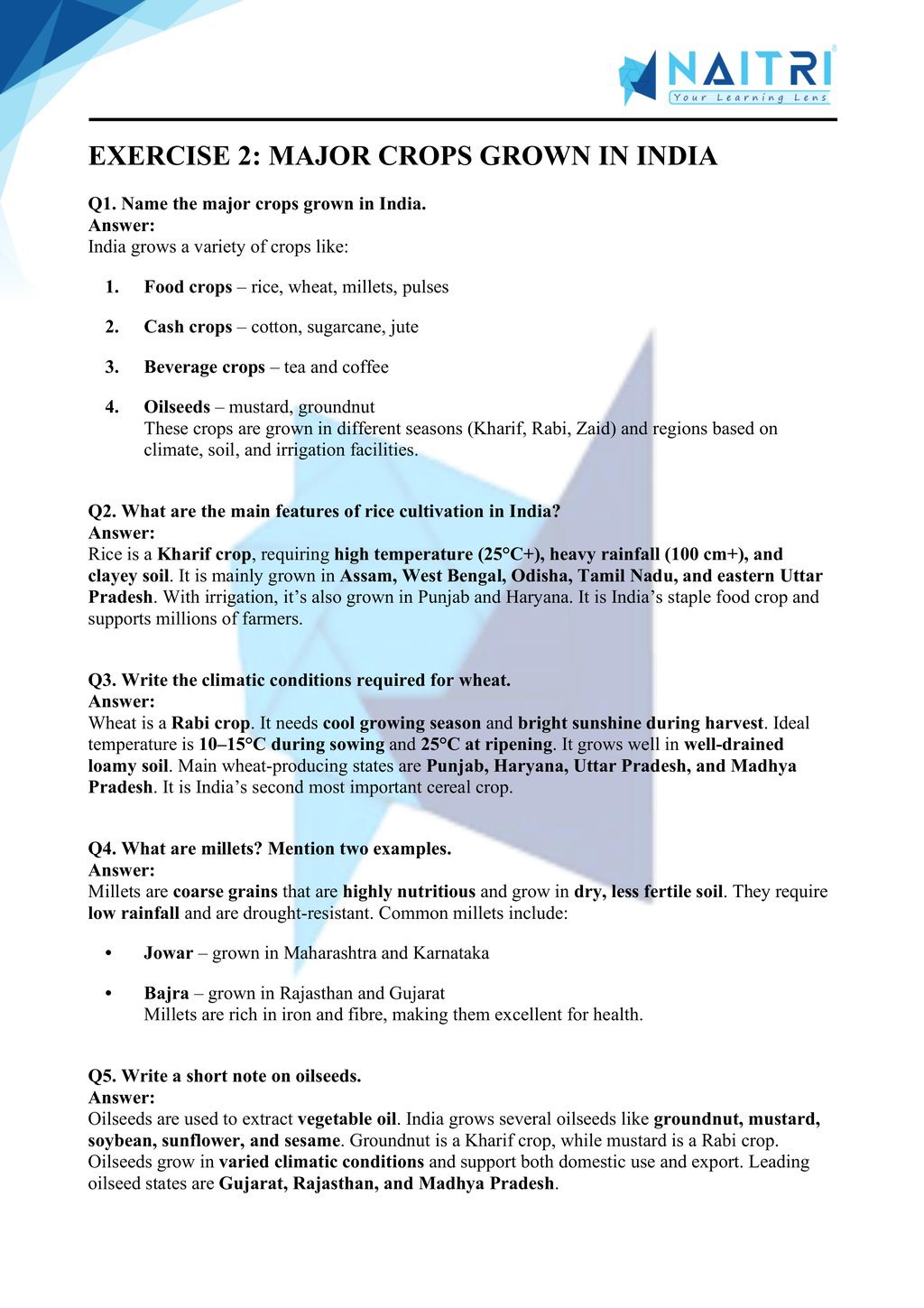
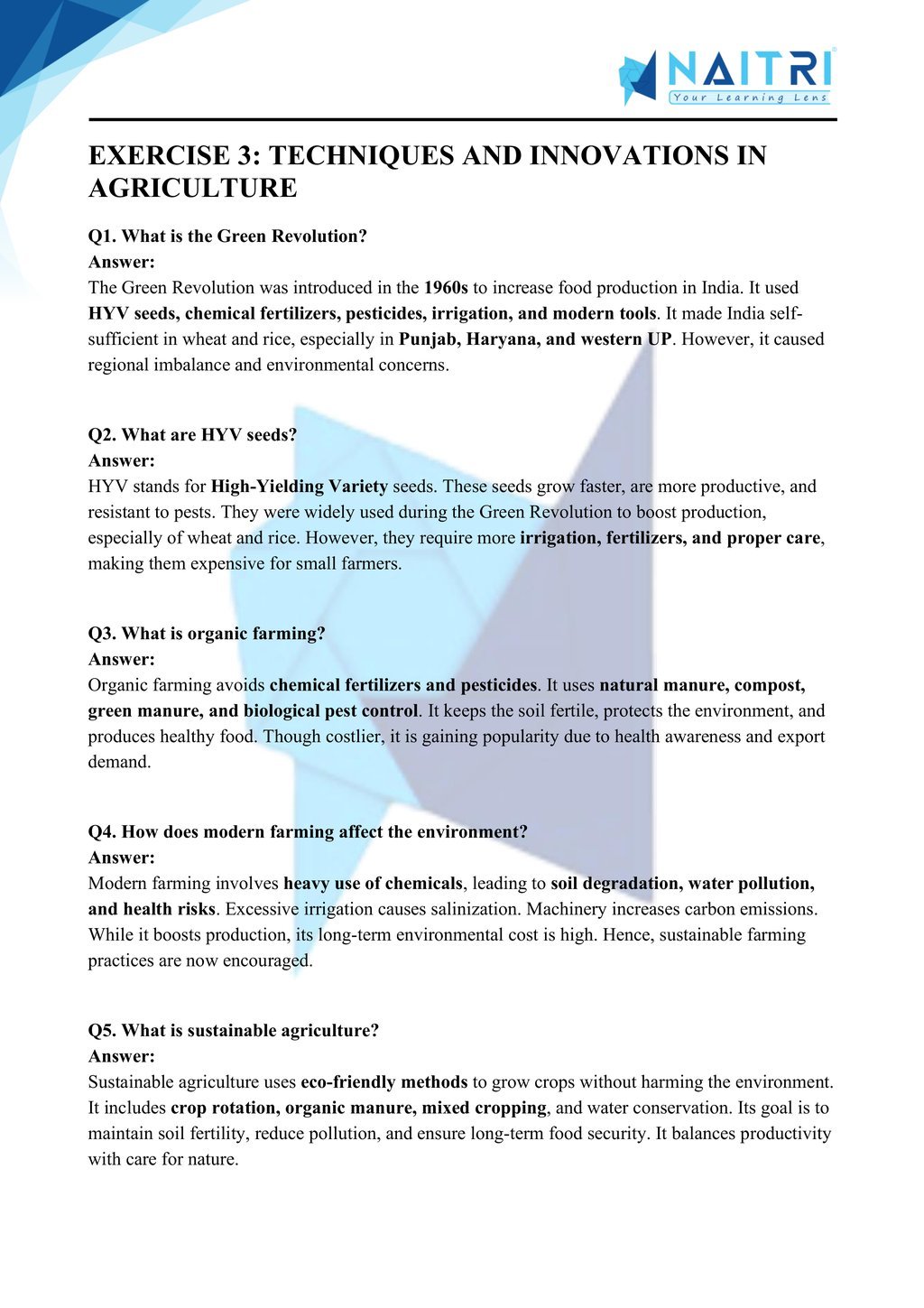
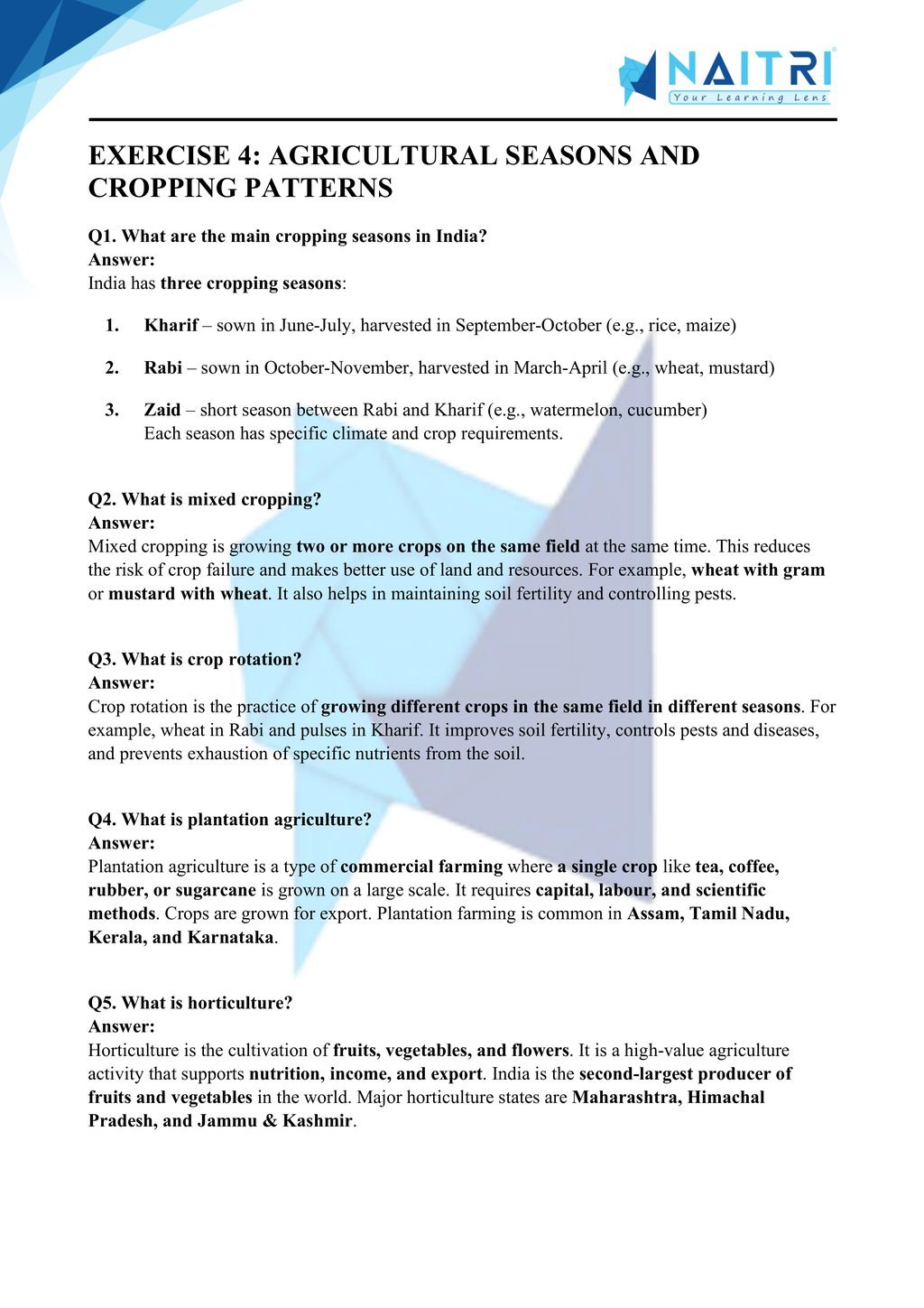
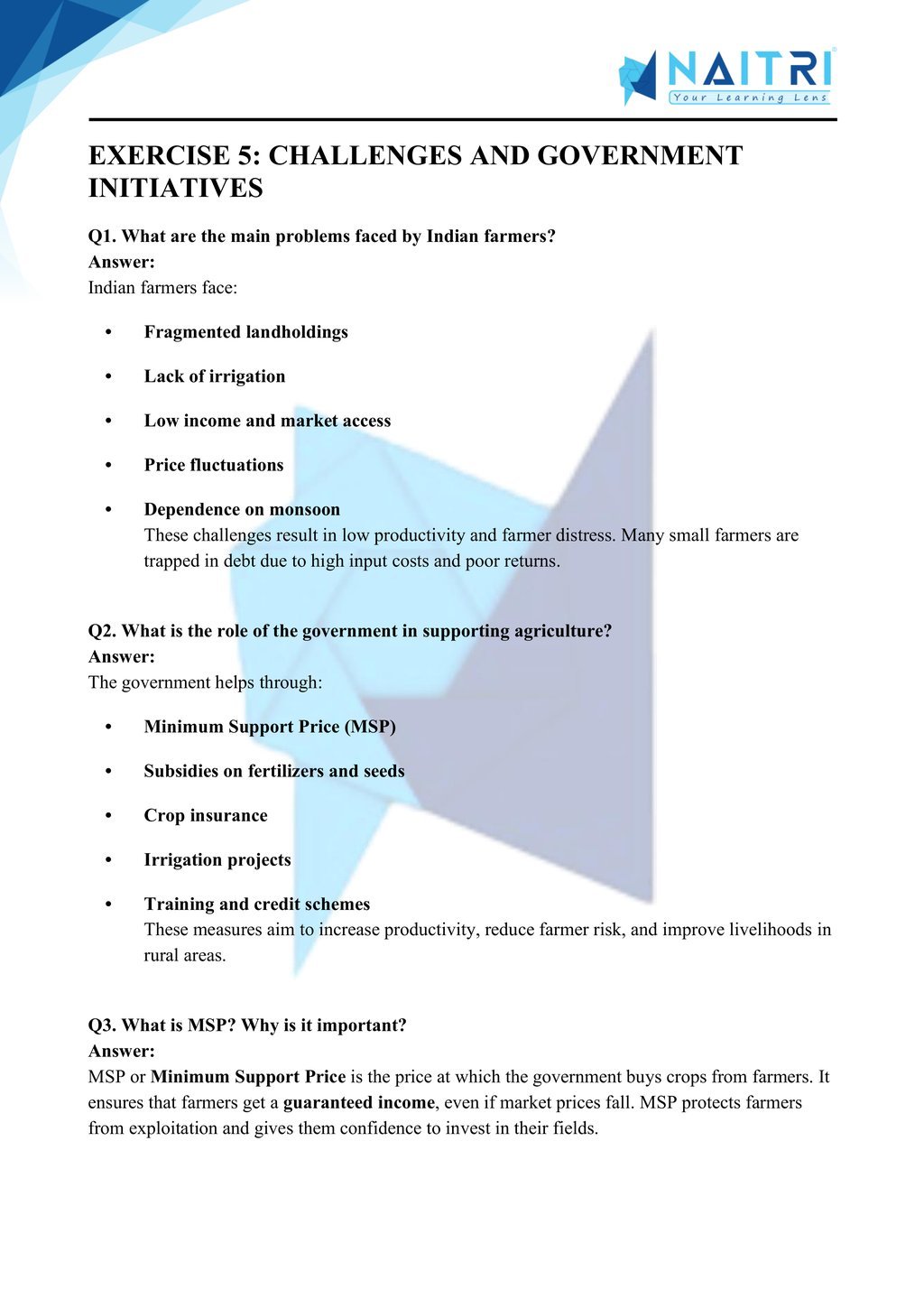

Experience Geography Like Never Before – With AR!
Understanding Agriculture is now more exciting and immersive! With the NAITRI App, you can explore complex geography concepts through Augmented Reality (AR). Watch crops grow, farming techniques evolve, and agricultural patterns spread — right in front of you. Our AR-powered lessons make learning interactive, 3D, and fun, helping you retain concepts better and enjoy every topic.



Visualize . Interact . Understand . The future of learning is here
Agriculture – Important Questions with Answers
1. What is agriculture?
Answer: Agriculture is the practice of growing crops and raising animals to meet human needs for food, clothing, and other products. It is a major occupation in India.
2. What are the three main types of farming in India?
Answer: The three main types are:
Primitive Subsistence Farming
Intensive Subsistence Farming
Commercial Farming
3. What is primitive subsistence farming?
Answer: It is a traditional method using simple tools, family labour, and small plots. It depends on monsoons and produces just enough for the family.
4. What is intensive subsistence farming?
Answer: This farming uses more labour and inputs on small land holdings to achieve high production. It is common in areas of high population density.
5. What is commercial farming?
Answer: Commercial farming involves the use of machinery, high-yielding seeds, and modern techniques to grow crops for sale in markets, not just for personal use.
6. What is plantation agriculture?
Answer: Plantation agriculture is a type of commercial farming where a single crop is grown on a large scale using modern inputs like fertilizers and irrigation.
7. Name two major plantation crops in India.
Answer: Tea and coffee are two major plantation crops grown mainly in Assam, Tamil Nadu, Kerala, and Karnataka.
8. What are rabi, kharif, and zaid crops?
Answer:
Rabi: Grown in winter (e.g., wheat, barley)
Kharif: Grown in monsoon (e.g., rice, maize)
Zaid: Grown between rabi and kharif (e.g., watermelon)
9. Give examples of rabi and kharif crops.
Answer:
Rabi: Wheat, gram, barley
Kharif: Rice, maize, jowar, cotton
10. What is the importance of agriculture in India?
Answer: Agriculture provides livelihood to more than 50% of the population, contributes to GDP, supports industries, and ensures food security for the nation.
11. Why is rice mainly grown in areas with high rainfall?
Answer: Rice needs abundant water and hot, humid conditions. Regions with over 100 cm rainfall and fertile soils are ideal for rice cultivation.
12. In which states is wheat mainly grown?
Answer: Wheat is grown in Punjab, Haryana, Uttar Pradesh, Bihar, and Madhya Pradesh, where there is cool growing season and moderate rainfall.
13. What are millets? Give examples.
Answer: Millets are coarse grains rich in nutrients. Examples include jowar, bajra, and ragi. They require less waterand are ideal for dry areas.
14. What is the importance of pulses in India?
Answer: Pulses are a major source of protein for vegetarians. They also help in soil fertility by fixing nitrogen and are grown across India.
15. Name two major oilseed crops grown in India.
Answer: Groundnut and mustard are major oilseed crops. They are used for cooking oil, animal feed, and in industrial purposes.
16. What are the climatic conditions required for cotton?
Answer: Cotton needs high temperature, light rainfall, and black soil. It requires about 210 frost-free days and is grown in Maharashtra and Gujarat.
17. Why is tea considered a plantation crop?
Answer: Tea is grown on large estates, requires huge labour, and is processed on-site. It is mainly grown in Assam and West Bengal.
18. What is the role of the Green Revolution in Indian agriculture?
Answer: The Green Revolution introduced HYV seeds, irrigation, fertilizers, and machinery, leading to a sharp rise in food grain production, especially in wheat and rice.
19. What are the harmful effects of modern agriculture?
Answer: Overuse of chemicals leads to soil degradation, water pollution, and loss of biodiversity. It also increases dependency on expensive inputs.
20. What is organic farming?
Answer: Organic farming avoids chemical fertilizers and pesticides, and uses natural manures and compost, aiming to preserve soil health and biodiversity.
21. What is the main aim of land reforms?
Answer: Land reforms aim to redistribute land, remove land inequality, and provide ownership rights to farmers for better productivity and justice.
22. What is agricultural marketing?
Answer: It involves all the steps from harvest to selling of produce, including storage, transport, grading, and reaching the market for fair prices.
23. What are the major challenges faced by Indian farmers?
Answer: Challenges include small land holdings, irrigation problems, debt, poor market access, and dependence on monsoons and traditional methods.
24. How is agriculture linked with industry?
Answer: Agriculture provides raw materials to industries like cotton for textile, sugarcane for sugar, and jute for packaging, thus supporting industrial growth.
25. Suggest two steps to improve Indian agriculture.
Answer:
Promote irrigation and crop insurance schemes
Train farmers in modern and sustainable practices
Agriculture discusses the major types of farming in India—primitive, intensive, and commercial—and the importance of agriculture in the Indian economy. Students learn about cropping patterns, major food and cash crops, and the Green Revolution. The chapter also examines challenges in agriculture like land fragmentation and dependency on monsoons, promoting a balanced view on technological development and sustainability in farming.
Download Naitri App
Easy, Visual Learning — Right on Your Phone
Learn with Augmented Reality! The Naitri app makes CBSE and MP Board concepts interactive and fun — even in low-resource settings. Watch lessons, complete homework, take tests, and track progress — all in one place. Anytime. Anywhere.
Available on








